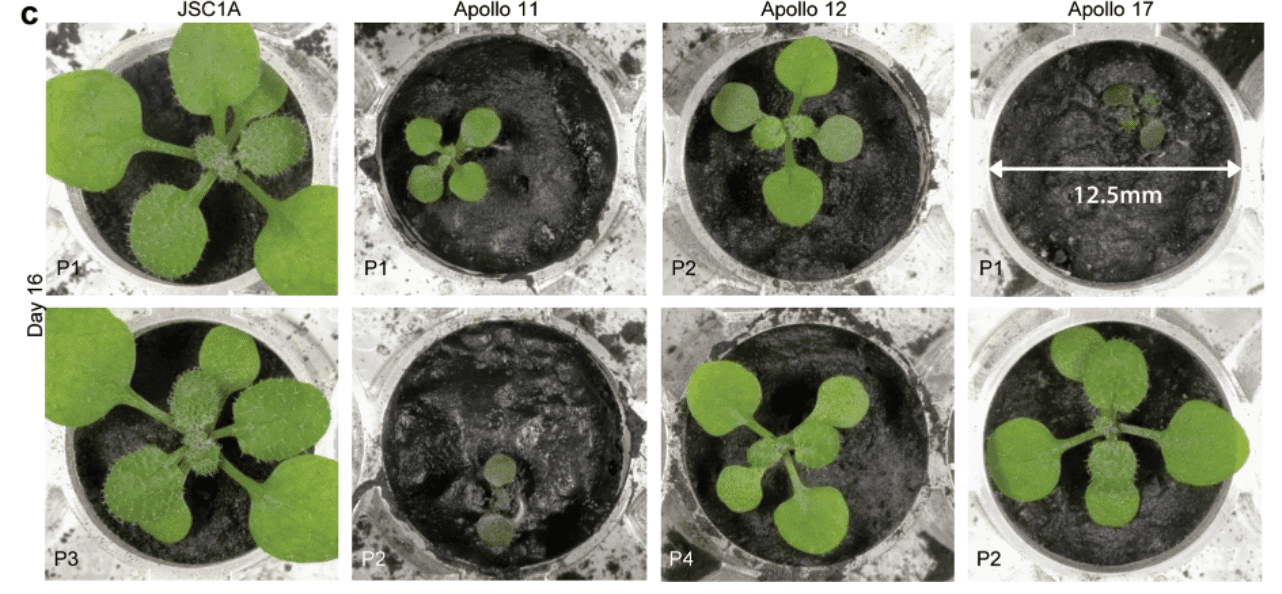It’s the first time in history experts have been able to do this with the University of Florida (UF) study ushering in a new era and branch for space exploration. They used lunar soil, also know as lunar regolith to conduct the experiment but had to be extremely cautious during procedures as they only had a total of 12 grams.
Besides that, complication, researchers designed the experiment to be as simple as can be. The planted the seeds in the regolith, then added water nutrients and light to eventually get a teeny-tiny “lunar garden” that consisted of Arabidopsis, also known as Thale Cress.
Using this plant was the optimum choice because it’s genetic code has been fully mapped and gave a greater insight into the soil process behind plant growing. It was discovered that plants grown in lunar soil, grew smaller and at a slower rate (than those not grown in regolith) but nonetheless, grew.
Scientists from UF hope that this breakthrough will prove valuable for the upcoming Artemis missions in which NASA aims to put people back on the moon by 2025.
“Artemis will require a better understanding of how to grow plants in space,” said Rob Ferl, study author and professor of horticultural sciences at UF.
“For future, longer space missions, we may use the moon as a hub or launching pad. It makes sense that we would want to use the soil that’s already there to grow plants.”

“We were amazed. We did not predict that,” she said.
“That told us that the lunar soils didn’t interrupt the hormones and signals involved in plant germination.”
The next steps for the team include figuring out the actual environment of the moon will play a factor in growing plants, considering it’s a dry place.
NASA’s Apollo Missions took place in the 60s and 70s
Click this link to see how UF scientists carried out this incredible feat: https://www.youtube.com/watch?v=sHrUw1sBm1U






